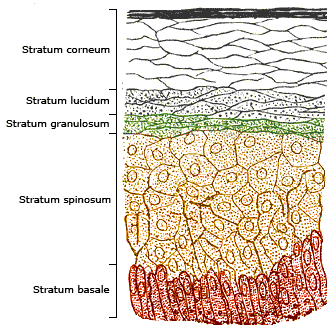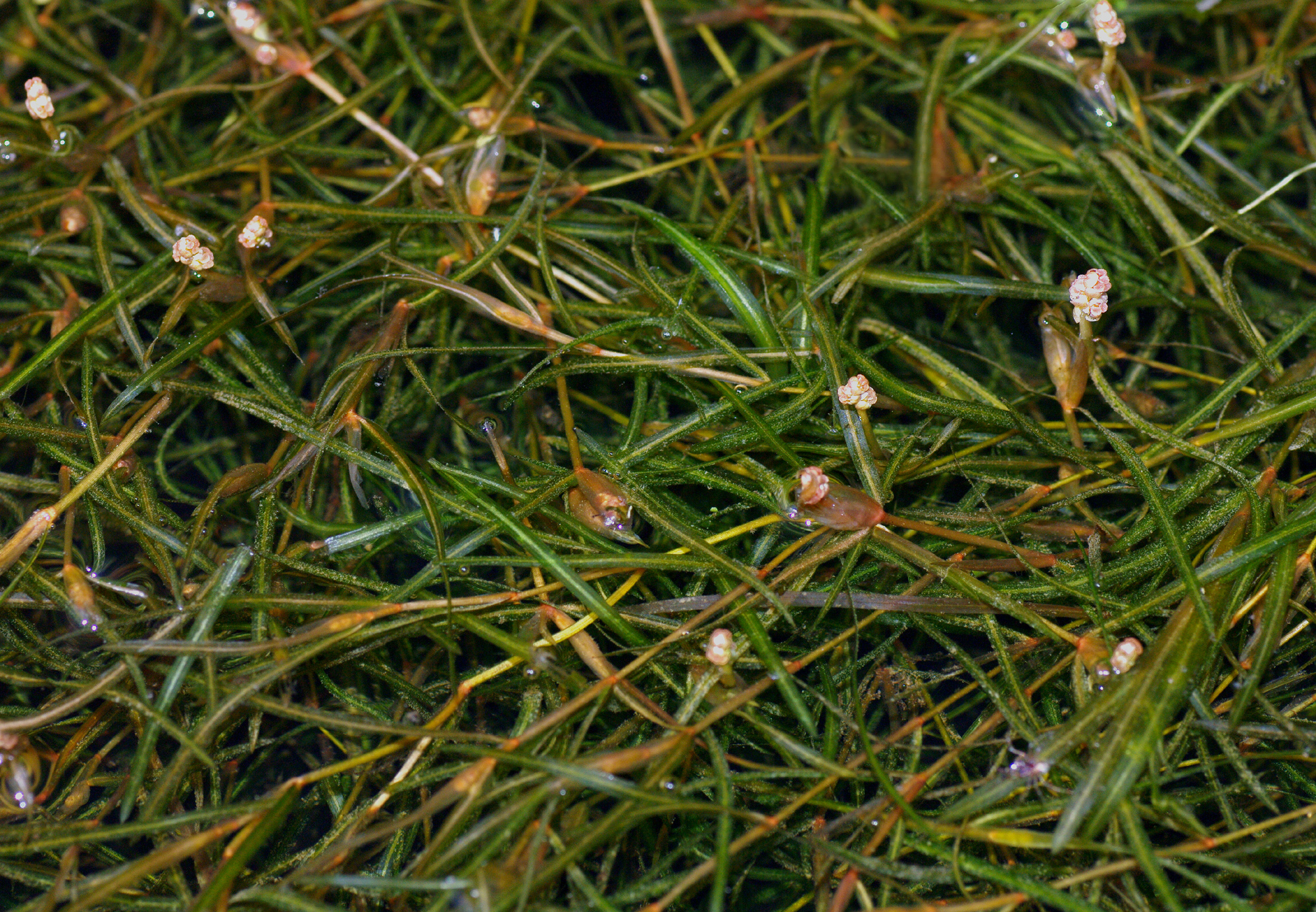|
Tetramyxa Parasitica
''Tetramyxa parasitica'' is a species of parasitic cercozoan, member of the plasmodiophorids, that causes gall formation on multiple genera of aquatic plants. It was first discovered on roots of ''Ruppia'' and described by Karl von Goebel in 1884 in his work ''Flora'', where it became the type species of the genus ''Tetramyxa''. Ecology and pathology ''T. parasitica'' is found in freshwater environments, brackish waters and estuaries. It is an obligate endoparasite of several species of the aquatic plants ''Ruppia'' ('' rastellata'', '' maritima'', '' spiralis'', '' brachypus''), ''Zannichellia'' ('' palustris'', ''repens'') and ''Potamogeton'' (''pusillus'', ''panormitanus'', '' striatus'', '' berteroanus''). When attacking a plant stem, the species generates galls that are roughly spherical in shape, with a diameter of 1-5 mm, and with color ranging from light cream and green (during the phase of sporogenic development where small plasmodia become mature resting spores) to dar ... [...More Info...] [...Related Items...] OR: [Wikipedia] [Google] [Baidu] |
Ruppia
''Ruppia'', also known as the widgeonweeds, ditch grasses or widgeon grass, is the only extant genus in the family Ruppiaceae, with eight known species. These are aquatic plants widespread over much of the world. The genus name honours Heinrich Bernhard Rupp, a German botanist (1688-1719). They are widespread outside of frigid zones and the tropics. Description The leaf is simple and not rhizomatous. They can be annual (commonly) or perennial (rarely); stem growth is conspicuously sympodial, but sometimes is not. These species are adapted to be in brackish water (and salt marshes). The leaves are small or medium-sized. Their disposition can be alternate, opposite, or whorled (usually alternate except when subtending an inflorescence). Even, lamina keep entire and are setaceous or linear. The leaf just shows one vein without cross-venules. Stomata are not present. The mesophyll leaks calcium oxalate crystals. The minor leaf veins do not present phloem transfer cells and leaks vess ... [...More Info...] [...Related Items...] OR: [Wikipedia] [Google] [Baidu] |
Zannichellia
''Zannichellia'' (common name horned pondweed) is a genus of submerged aquatic flowering plant, with threadlike leaves and tiny flowers. It is fully adapted to an aquatic life cycle, including underwater pollination Pollination is the transfer of pollen from an anther of a plant to the stigma of a plant, later enabling fertilisation and the production of seeds, most often by an animal or by wind. Pollinating agents can be animals such as insects, birds .... There are perhaps five species, including '' Zannichellia palustris''. The genus is named after Gian Girolamo Zannichelli (1662–1729), Italian botanist. Description These slender plants grow submerged in water. The leaves are usually oppositely arranged and long and narrow. They have stipular sheaths. The flowers are unisexual. The male flowers have a single stamen with a slender filament and anthers that are 2-4- thecous. The female flowers have a cup-shaped membranous perianth. There are usually four carpe ... [...More Info...] [...Related Items...] OR: [Wikipedia] [Google] [Baidu] |
Hypertrophy
Hypertrophy is the increase in the volume of an organ or tissue due to the enlargement of its component cells. It is distinguished from hyperplasia, in which the cells remain approximately the same size but increase in number.Updated by Linda J. Vorvick. 8/14/1Hyperplasia/ref> Although hypertrophy and hyperplasia are two distinct processes, they frequently occur together, such as in the case of the hormonally-induced proliferation and enlargement of the cells of the uterus during pregnancy. Eccentric hypertrophy is a type of hypertrophy where the walls and chamber of a hollow organ undergo growth in which the overall size and volume are enlarged. It is applied especially to the left ventricle of heart. Sarcomeres are added in series, as for example in dilated cardiomyopathy (in contrast to hypertrophic cardiomyopathy, a type of concentric hypertrophy, where sarcomeres are added in parallel). Gallery File:*+ * Photographic documentation on sexual education - Hypertrophy o ... [...More Info...] [...Related Items...] OR: [Wikipedia] [Google] [Baidu] |
Hyperplasia
Hyperplasia (from ancient Greek ὑπέρ ''huper'' 'over' + πλάσις ''plasis'' 'formation'), or hypergenesis, is an enlargement of an organ or tissue caused by an increase in the amount of organic tissue that results from cell proliferation. It may lead to the gross enlargement of an organ, and the term is sometimes confused with benign neoplasia or benign tumor. Hyperplasia is a common preneoplastic response to stimulus. Microscopically, cells resemble normal cells but are increased in numbers. Sometimes cells may also be increased in size (hypertrophy). Hyperplasia is different from hypertrophy in that the adaptive cell change in hypertrophy is an increase in the ''size'' of cells, whereas hyperplasia involves an increase in the ''number'' of cells. Causes Hyperplasia may be due to any number of causes, including proliferation of basal layer of epidermis to compensate skin loss, chronic inflammatory response, hormonal dysfunctions, or compensation for damage ... [...More Info...] [...Related Items...] OR: [Wikipedia] [Google] [Baidu] |
Aerenchyma
Aerenchyma or aeriferous parenchyma or lacunae, is a modification of the parenchyma to form a spongy tissue that creates spaces or air channels in the leaves, stems and roots of some plants, which allows exchange of gases between the shoot and the root. The channels of air-filled cavities (see image to right) provide a low-resistance internal pathway for the exchange of gases such as oxygen, carbondioxide and ethylene between the plant above the water and the submerged tissues. Aerenchyma is also widespread in aquatic and wetland plants which must grow in hypoxic soils. The word "aerenchyma" is Modern Latin derived from Latin ' for "air" and Greek ' for "infusion." Aerenchyma formation and hypoxia When soil is flooded, hypoxia develops, as soil microorganisms consume oxygen faster than diffusion occurs. The presence of hypoxic soils is one of the defining characteristics of wetlands. Many wetland plants possess aerenchyma, and in some, such as water-lilies, there is mass flo ... [...More Info...] [...Related Items...] OR: [Wikipedia] [Google] [Baidu] |
Cuticle
A cuticle (), or cuticula, is any of a variety of tough but flexible, non-mineral outer coverings of an organism, or parts of an organism, that provide protection. Various types of "cuticle" are non-homologous, differing in their origin, structure, function, and chemical composition. Human anatomy In human anatomy, "cuticle" can refer to several structures, but it is used in general parlance, and even by medical professionals, to refer to the thickened layer of skin surrounding fingernails and toenails (the eponychium), and to refer to the superficial layer of overlapping cells covering the hair shaft ( cuticula pili), consisting of dead cells, that locks the hair into its follicle. It can also be used as a synonym for the epidermis, the outer layer of skin. Cuticle of invertebrates In zoology, the invertebrate cuticle or cuticula is a multi-layered structure outside the epidermis of many invertebrates, notably roundworms and arthropods, in which it forms an exoskelet ... [...More Info...] [...Related Items...] OR: [Wikipedia] [Google] [Baidu] |
Epidermis
The epidermis is the outermost of the three layers that comprise the skin, the inner layers being the dermis and Subcutaneous tissue, hypodermis. The epidermis layer provides a barrier to infection from environmental pathogens and regulates the amount of water released from the body into the atmosphere through transepidermal water loss. The epidermis is composed of stratified squamous epithelium, multiple layers of flattened cells that overlie a base layer (stratum basale) composed of Epithelium#Cell types, columnar cells arranged perpendicularly. The layers of cells develop from stem cells in the basal layer. The human epidermis is a familiar example of epithelium, particularly a stratified squamous epithelium. The word epidermis is derived through Latin , itself and . Something related to or part of the epidermis is termed epidermal. Structure Cellular components The epidermis primarily consists of keratinocytes (cell proliferation, proliferating basal and cell differen ... [...More Info...] [...Related Items...] OR: [Wikipedia] [Google] [Baidu] |
Galls
Galls (from the Latin , 'oak-apple') or ''cecidia'' (from the Greek , anything gushing out) are a kind of swelling growth on the external tissues of plants, fungi, or animals. Plant galls are abnormal outgrowths of plant tissues, similar to benign tumors or warts in animals. They can be caused by various parasites, from viruses, fungi and bacteria, to other plants, insects and mites. Plant galls are often highly organized structures so that the cause of the gall can often be determined without the actual agent being identified. This applies particularly to some insect and mite plant galls. The study of plant galls is known as cecidology. In human pathology, a gall is a raised sore on the skin, usually caused by chafing or rubbing. Causes of plant galls Insects and mites Insect galls are the highly distinctive plant structures formed by some herbivorous insects as their own microhabitats. They are plant tissue which is controlled by the insect. Galls act as both the habitat ... [...More Info...] [...Related Items...] OR: [Wikipedia] [Google] [Baidu] |
Potamogeton Berteroanus
''Potamogeton'' is a genus of aquatic, mostly freshwater, plants of the family Potamogetonaceae. Most are known by the common name pondweed, although many unrelated plants may be called pondweed, such as Canadian pondweed (''Elodea canadensis''). The genus name means "river neighbor", originating from the Greek ''potamos'' (river) and ''geiton'' (neighbor). Morphology ''Potamogeton'' species range from large (stems of 6 m or more) to very small (less than 10 cm). Height is strongly influenced by environmental conditions, particularly water depth. All species are technically perennial, but some species disintegrate in autumn to a large number of asexually produced resting buds called turions, which serve both as a means of overwintering and dispersal. Turions may be borne on the rhizome, on the stem, or on stolons from the rhizome. Most species, however, persist by perennial creeping rhizomes. In some cases the turions are the only means to differentiate species. The le ... [...More Info...] [...Related Items...] OR: [Wikipedia] [Google] [Baidu] |
Potamogeton Striatus
''Potamogeton'' is a genus of aquatic, mostly freshwater, plants of the family Potamogetonaceae. Most are known by the common name pondweed, although many unrelated plants may be called pondweed, such as Canadian pondweed (''Elodea canadensis''). The genus name means "river neighbor", originating from the Greek ''potamos'' (river) and ''geiton'' (neighbor). Morphology ''Potamogeton'' species range from large (stems of 6 m or more) to very small (less than 10 cm). Height is strongly influenced by environmental conditions, particularly water depth. All species are technically perennial, but some species disintegrate in autumn to a large number of asexually produced resting buds called turions, which serve both as a means of overwintering and dispersal. Turions may be borne on the rhizome, on the stem, or on stolons from the rhizome. Most species, however, persist by perennial creeping rhizomes. In some cases the turions are the only means to differentiate species. The leave ... [...More Info...] [...Related Items...] OR: [Wikipedia] [Google] [Baidu] |
Potamogeton Panormitanus
''Potamogeton pusillus'' is a species of aquatic plant known by the common names small pondweed, lesser pondweed or least pondweed. It occurs in standing and slow-flowing freshwater habitats throughout the Northern Hemisphere. Description Lesser pondweed is a superficially grasslike herb producing a very slender, branching, somewhat compressed stem, usually less than 70 cm but occasionally up to one metre in length. Nodal glands, if present, are generally poorly developed. The leaves are narrow and linear, translucent, mid or olive green, usually 20–50 mm long × 0.8-1.4 mm wide, but rarely up to 100 mm long and 1.9 mm wide. The midrib often lacks lacunae (transparent areas either side of the midrib) either side of it, and if present, lacunae are restricted to the lower half of the leaf. There are no floating leaves. The stipules are tubular when young, but tend to split with age. Turions are produced, often in large quantities. In early autumn the en ... [...More Info...] [...Related Items...] OR: [Wikipedia] [Google] [Baidu] |
.jpg)





